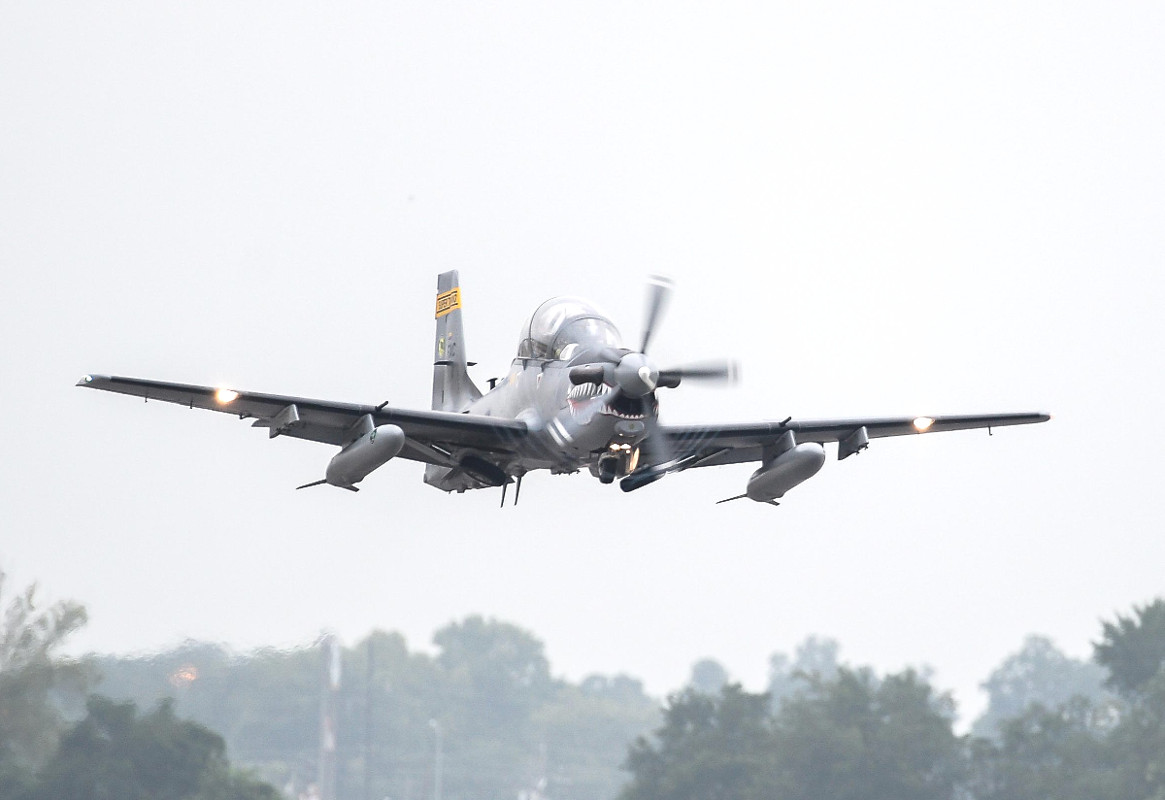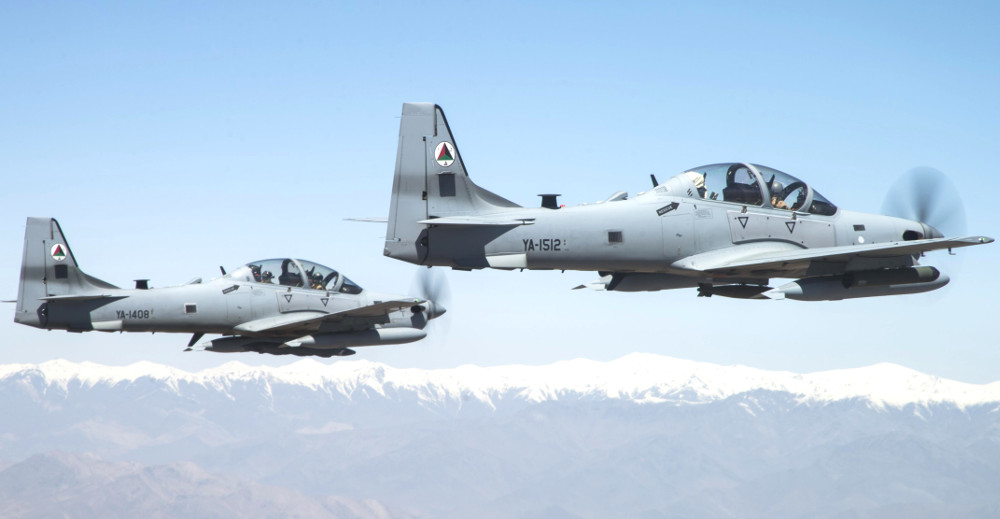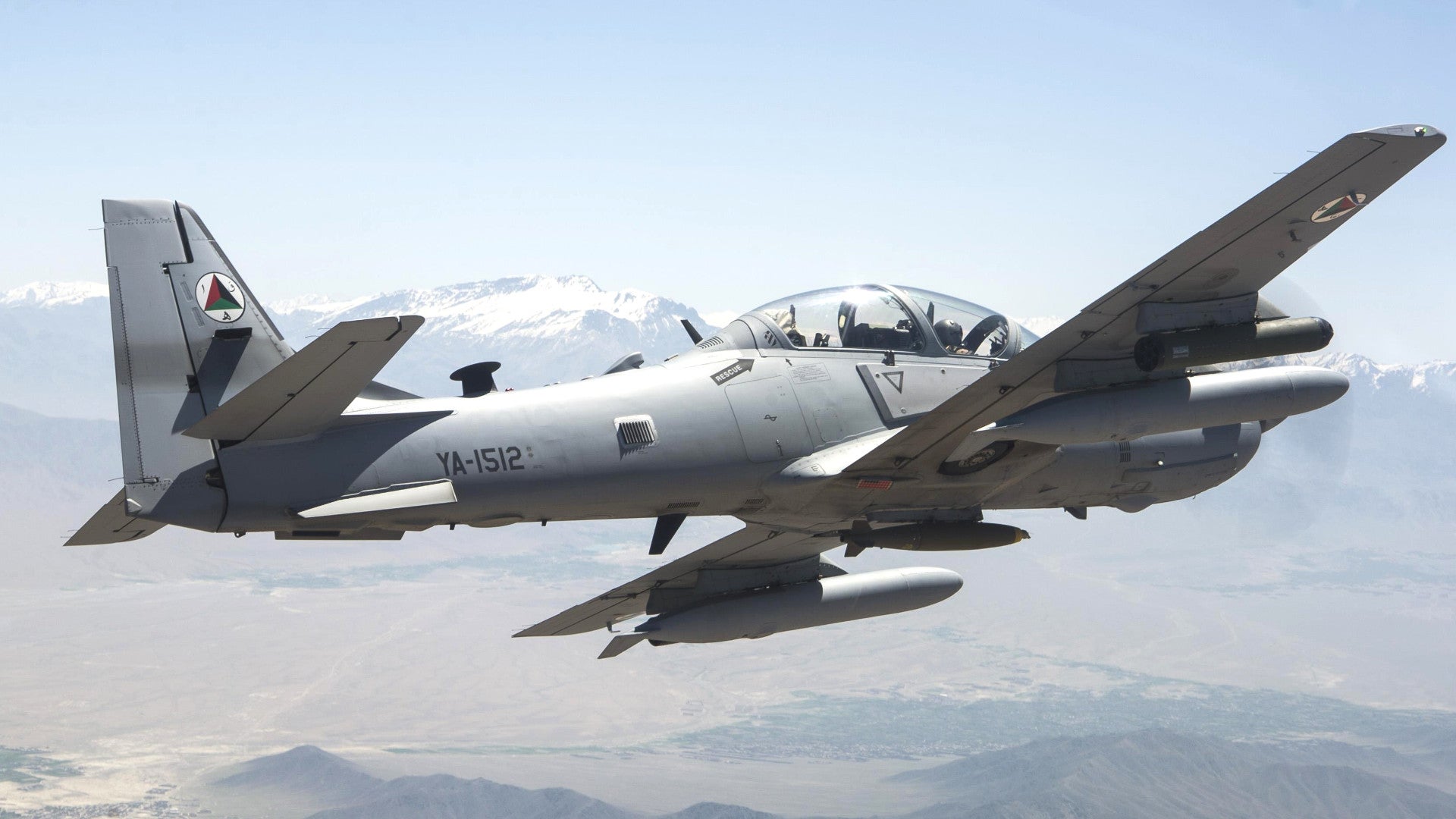The U.S. Air Force is about to begin testing a number of light attack aircraft as part of an experimental assessment commonly known as OA-X. At the same time, it appears that U.S. Special Operations Command (SOCOM) has been actively pushing the service for a project of its own, called Light Attack Support for Special Operations, or LASSO.
On July 28, 2017, the Air Force Life Cycle Management Center at Wright-Patterson Air Force Base in Ohio announced the LASSO plan on the federal government’s main contracting website, FedBizOpps. The notice said the center’s Fighter Bomber Directorate had teamed up with SOCOM to explore both light attack aircraft and associated technology specifically for special operations forces.
The brief posting made clear that the first step would be simply to gather information on “emerging light attack platforms” and “platform-agnostic” systems, which is to say equipment that wouldn’t require any specific plane to accommodate it. SOCOM and its service components have long been interested in expanding their organic light attack capabilities, which presently including armed drones, fixed wing gunships, and specialized helicopters.
As such, LASSO could potentially include readily reconfigurable designs with modular bays to accept different sensors or simply aircraft able to carry any of a number of multi-purpose pods able to carry day- and night vision cameras, radars, data links, and more. There are already a number of multi-functional stores available and in June 2017, the Air Force began flight testing its own design, known as AgilePod. Earlier in July 2017, it appeared that special operations forces had employed a contractor-flown modular surveillance aircraft during a training exercise, as well.

This broad requirement could apply to weapons configurations, too. In particular, the Air Force and SOCOM have been developing a number of small precision guided munitions, such as the Advanced Precision Kill Weapon System (APKWS) II laser-guided rocket, for both manned and unmanned aircraft. SOCOM has already fielded a common launch tube that can fire a number of missiles and stand-off glide munitions, including the popular AGM-176 Griffin and up-coming GBU-69/B Small Glide Munition (SGM), for various platforms. If successful, it seems likely that the LASSO project could one day be involved in more exotic weapons, such as lasers and other directed energy beams, as well.

However, there were no formal requirements or a list of desired capabilities to go along with the statement, but there was a promise that this information would go out to interested parties in a “closed call process.” The Air Force was also quick to stress that this notice did not reflect any formal plan for it or SOCOM to ultimately buy any aircraft or gear.
More importantly, “this effort is separate and distinct from the on-going Light Attack Experiment or any other Light Attack projects,” the notice explained. “This effort should not conflict with or be confused with any other Light Attack aircraft program or effort.”
But while any special operations light attack fleet would undoubtedly be smaller than one within the U.S. Air Force proper, it seems hard to imagine that LASSO won’t be a competitor to the nebulous OA-X experiment at least to some degree. As of yet, the Air Force has yet to articulate any real goals or objectives for the test project, which has become formally known as the Capability Assessment of Non-Developmental Light Attack Platforms.

In addition, the service insists that there is no existing plan to turn results from the OA-X into a fully fledged “program of record” that would lead to purchases of actual aircraft. This is despite the service’s own repeated acknowledgements of the obvious benefits of a fleet of low-cost attackers for operations in permissive environments with very limited anti-aircraft threats, namely freeing up high performance tactical aircraft for more high-risk missions, well as a push in Congress to include money in the next defense budget that could cover the cost of dozens of planes.
It seems almost guaranteed that OA-X and LASSO would end up evaluating many of the same technologies and exactly the same types of aircraft. At present, we know that the Air Force’s light attack experiment will evaluate three types, Sierra Nevada Corporation and Embraer’s A-29 Super Tucano, Air Tractor’s OA-802, along with Textron’s AT-6 Wolverine and Scorpion.
Other similar planes on the market include IOMAX’s Archangel and L-3’s AT-802L, both of which are heavily modified agricultural designs like the OA-802, as well as the AC-208 Combat Caravan, an armed conversion of Cessna’s light utility aircraft. The U.S. military has already facilitated the delivery of the IOMAX and Cessna types, as well as Super Tucanos, to American allies abroad, including Afghanistan, Jordan, Lebanon, and the United Arab Emirates.

And unlike the Air Force, SOCOM has been pushing hard for this capability for nearly a decade, beginning with a program known as Imminent Fury in the late 2000s. As part of that project, on behalf of SOCOM, the U.S. Navy leased an EMB-314 Super Tucano – the same plane SNC and Embraer now market as the A-29 – from a subsidiary of Blackwater Worldwide in 2008. The evaluation of this aircraft, possibly designated as the A-14A based on official U.S. military records, involved testing both its surveillance and light attack capabilities.
The results of Imminent Fury informed a follow-on program known as Combat Dragon II, which resulting in the deployment of a pair of heavily modified OV-10G+ Bronco aircraft to the Middle East in 2015. Again, the Navy, acting on behalf of SOCOM, cut a deal with NASA to borrow both aircraft for the field tests with the agreement that the service would return them to the civilian agency with significant upgrades after the evaluation period ended.
While supporting special operations forces in Iraq, the pair of Bronco’s flew a total of 120 combat missions. Their primary weapon was the APKWS II rocket. Though the two aircraft reportedly had a very successful deployment, the Navy dutifully returned them to NASA afterwards. As of June 2017, the planes were still sitting in a hangar at the Langley Research Center in Virginia still wearing their gray tactical paint scheme and “black pony” art, an homage to the Navy’s storied Vietnam War OV-10 unit, Light Attack Squadron Four.
It was unlikely that SOCOM would ever have considered actively adopting the aircraft, no matter how successful they proved to be, as the Bronco is long out of production. The decision to use the planes as the test platform seemed to be a matter of convenience more than anything else. In 2010, despite pleas from U.S. Army General Stanley McChrystal, then in charge of the U.S.-led coalition in Afghanistan, Congress had blocked the initial plans to acquire more Super Tucanos for the Combat Dragon II program.
Still, the project showed SOCOM’s continuing and active interest in the capability. As a result, if the Air Force itself continues to be lukewarm on OA-X, SOCOM could push for a significant piece of any funds Congress ultimately appropriates for light attack aircraft. The Air Force Special Operations Command would likely be the primary operator of any dedicated special operations fixed-wing light attack planes anyways.
Whatever happens in the end, the U.S. military’s interest in light attack capabilities only appears to be growing and you can be sure we’ll continue following developments with OA-X, LASSO, and any other similar programs that emerge.
Contact the author: joe@thedrive.com
